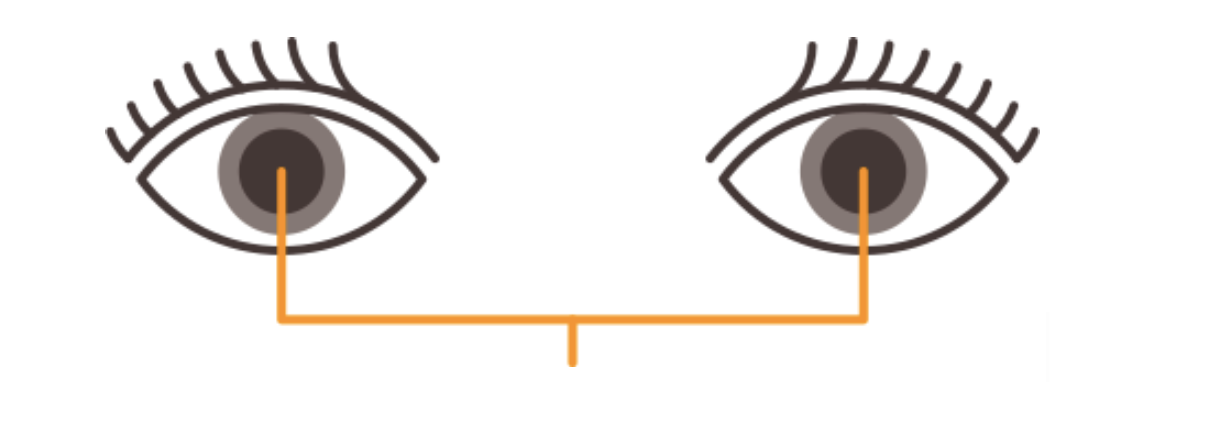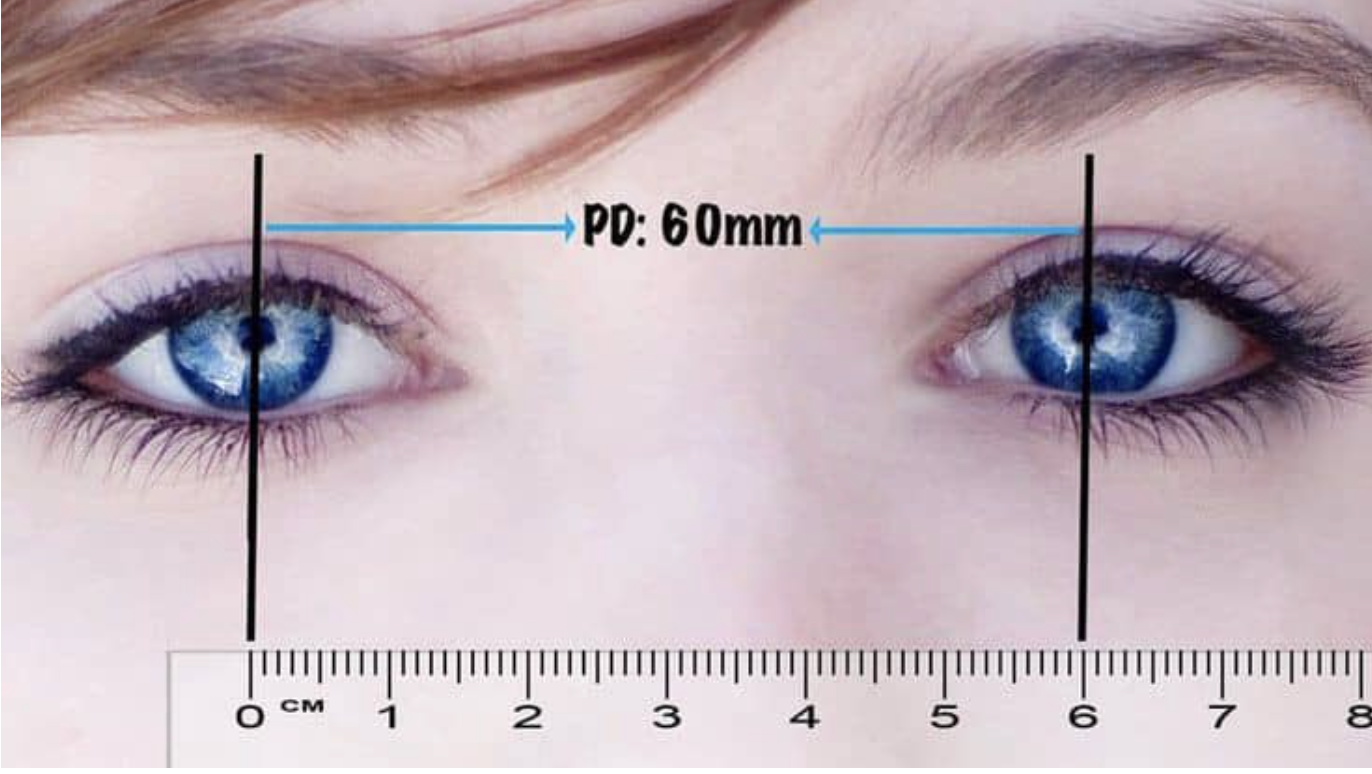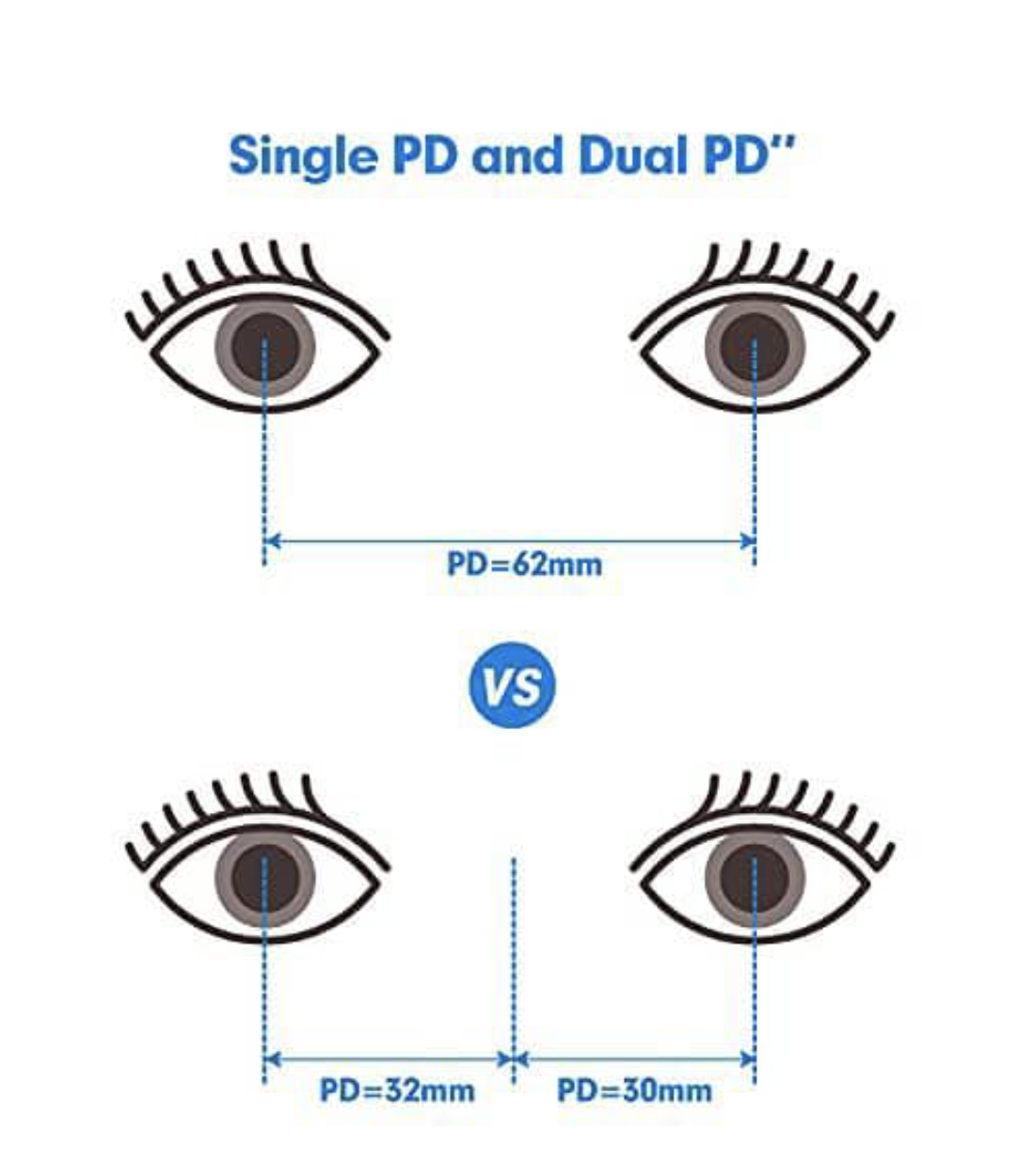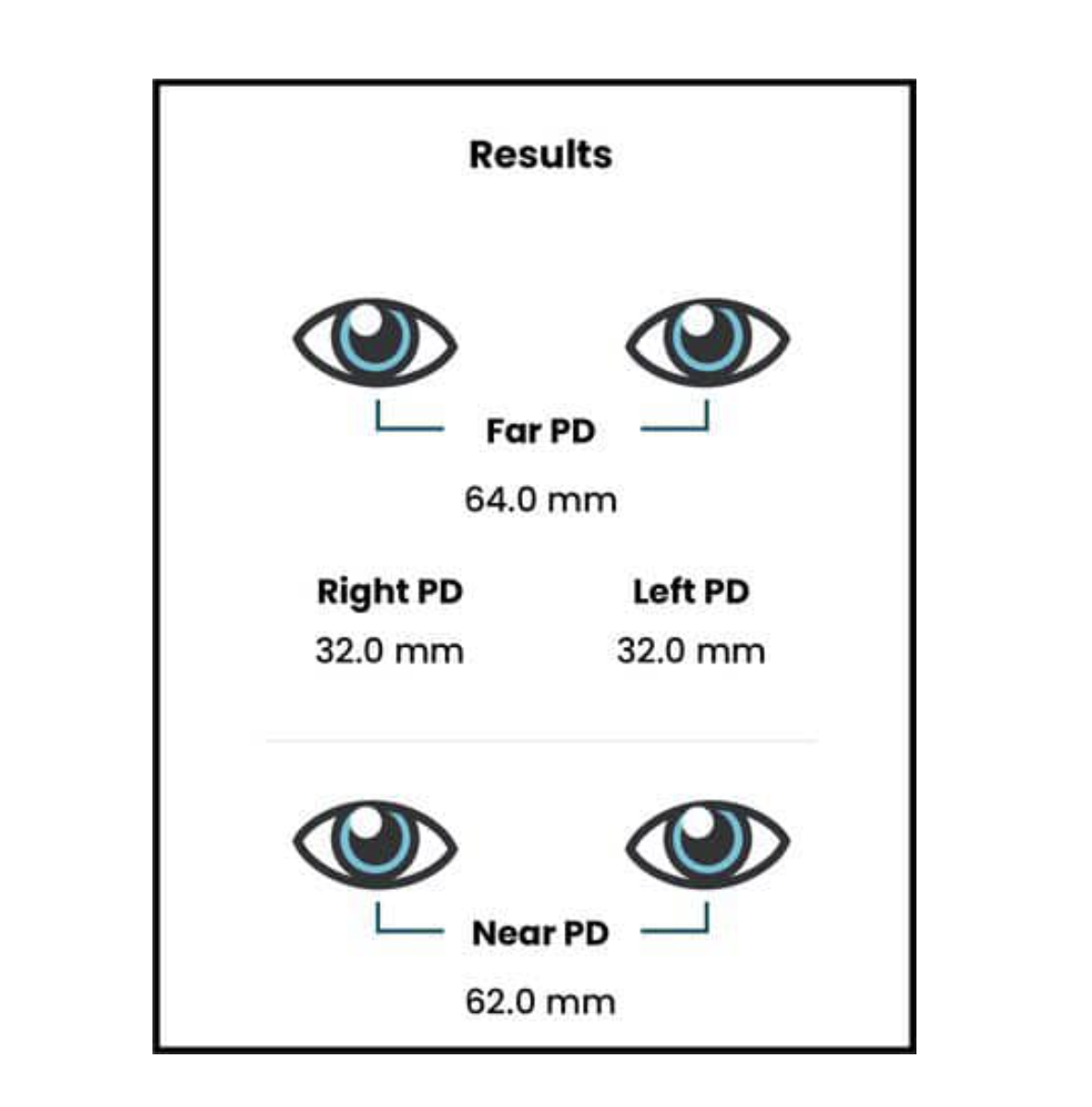Pupillary Distance (PD), also known as interpupillary distance, is the horizontal distance between the centres of your pupils—the dark circle in your eye that shrinks to focus near objects and widens to accommodate light from far objects. PD is measured in millimetres.
The PD value is used to properly align your glasses with your eyes. Wearing misaligned glasses may cause side effects like eye strain, nausea, and distorted vision. Your PD value doesn't appear on your prescription; as a result, you have to take this measurement yourself to be able to order your glasses from us.
In this blog post, we'll walk you through the types of PD measurements—distance PD and near PD—how they differ, why PD values are important, and how to measure your PD.

Distance PD and Far PD Compared
This is the distance between your pupils while you’re focusing on objects far away from you. Distance PD can be used to make all distance vision lenses—all types of glasses except reading and computer glasses.
Distance PD is professionally measured using a pupillometer. However, you can measure your Distance PD yourself with a mirror and a ruler. You will learn how to do this in the latter part of this article.
Your Near PD, also known as Near Centration Distance (CD), is the distance between your pupils when looking at objects close to you—for example, while reading a book. Near PD values are used to align reading and computer glasses with your eyes.
As a general rule of thumb in eye care, your Near PD value is 2-3 mm less than your Distance PD value. Simply deduct 3 mm from your Distance PD to calculate your Near PD.
Differences between Distance PD and Near PD
You may find yourself wondering how it is possible to have two different pupillary distances. Take your eyes off the screen in front of you and look at a distant object. Do this over again, and pay close attention to the way your eyeballs move.
When you focus on objects near you, your eyes move inward towards your nose, a process known as eye convergence, and when you look farther away, your eyeballs tend to move back outward, bringing your pupils to an almost parallel arrangement.
The major differences between your Distance PD and Near PD are:
| Distance PD | Near PD | |
| Definition | PD while focusing on far objects | PD while focusing on near objects |
| Measurement Differences | Actual distance between your pupils while focusing on a far object | 2-3 mm less than your Distance PD as a result of eye convergence while looking at near objects |
| Value Significance/Use | Used to align correction glasses with your eyes. | It can only be used to align reading and computer glasses with your eyes |
| How to Measure | It can be measured at home while looking at a far object or with the aid of a pupillometer | Generally calculated by subtracting 3 mm from the Distance PD value |
Why PD Values are Important
PD measurements are so important that without one, you can't buy a pair of glasses from our store. Submitting your PD value allows us to fit you with a pair of lenses specifically tailored to your eye size and visual needs.
PD measurements are also used to test your stereoacuity—the differences between how well each of your eyes sees. This helps us determine the ability of your brain to merge the different fields of view from each eye and give you a correct perception of depth and distance.
Benefits of Accurate PD Values
An accurate PD measurement helps us align your lenses to fit your eyes perfectly. Here are some of the benefits of wearing properly aligned glasses:
- Properly aligned lenses give you the best possible clarity and definition.
- They provide you with comfort and reduce headaches and eyestrain by making sure that your eye muscles do not do more work than necessary.
- Properly aligned glasses give you an accurate perception of depth and distance, helping you perform tasks like driving and walking safely.
- Properly aligned glasses make sure that the corrective power of your lens is applied accurately, with the right power and at the right angle/axis. This is particularly important for cylindrical lenses and astigmatism correction.
Side Effects of Wrong PD Values
Entering the wrong PD value while ordering your eyeglasses will unfortunately lead to you receiving misaligned glasses. The list below includes a few of the side effects of wearing misaligned glasses:
- Misaligned glasses put extra load on your eye muscles, forcing them to work harder to bring objects into focus. This may cause migraines, eyestrain, and discomfort. Prolonged eye muscle strain may cause more serious eye defects like asthenopia—eye fatigue
- Improper lens alignment may cause blurred or double vision, making basic tasks, like reading more difficult.
- Misaligned lenses also give a false sense of depth and distance, making it harder to drive or walk. This may even lead to an increased risk of accidents.
- They may further weaken the ability of the eyes to focus, worsening eye defects in the process. This is why we often advise not to wear other people’s prescribed glasses.
How to Measure PD

Your pupillary distance value isn’t commonly added to your optical prescription. You have to take the measurements yourself to order your prescription from our online store. In this section, we will provide you with a quick and easy DIY method to measure and record your PD at home.
Tools Needed to Take Your PD Measurement
- A ruler, calibrated in millimetres.
- A mirror
- A tape measure (To get your distance from the mirror).
Steps to Measure Your PD
To measure your Distance PD:
- Stand at least 5 metres from the mirror. Make sure you’re in a well-lit room.
- Hold the ruler up horizontally against your brow line.
- Close your right eye, and look straight at the mirror with your left eye.
- Align the centre of your left pupil with the ruler's 0 mm mark.
- Close your left eye and open your right.
- Make sure you do not move the ruler. Note the millimetre mark that lines up with the centre of your right pupil. That mark is your PD.
- Repeat these steps three times and find the average of the three measurements taken. This ensures your PD value's accuracy.
Note: Remember, to calculate your Near PD value, simply deduct 3 mm from your measured Distance PD.
If you struggle to measure your PD on your own, we advise you to visit your eye doctor and ask for a professional measurement. Professional measurements are more accurate and reliable, although they may come at an added cost.
How to Record Your PD

You may choose to record your measured PD in any of the following forms:
- Single form/Binocular form
This form records PD as the distance between pupils. The name "singular form" comes from the fact that it records PD as a single value.
- Dual form/Monocular form
This form records the distance from one pupil to the nose bridge. It is recorded as two values in this case; one value for each eye. This form caters to individuals with asymmetrical faces.
Conclusion
Pupillary distance is an important metric when ordering glasses from our store and the wrong PD can negatively affect how your corrective lenses work. PD can be written as Distance PD and Near PD depending on the type of lens you need, with distance PD used to align distance vision lenses and Near PD for reading and computer lenses. You can measure your PD with a few household tools and by following the steps outlined above.
Now that you understand the differences between Near PD and Far PD and know how to accurately take their measurements, it’s time to head down to our catalogue, pick out the right pair of frames for you, pick out the lens type you need, and enter your prescription and PD. Sit back, relax, and your perfectly fitted pair of glasses will be at your door in a few days.











